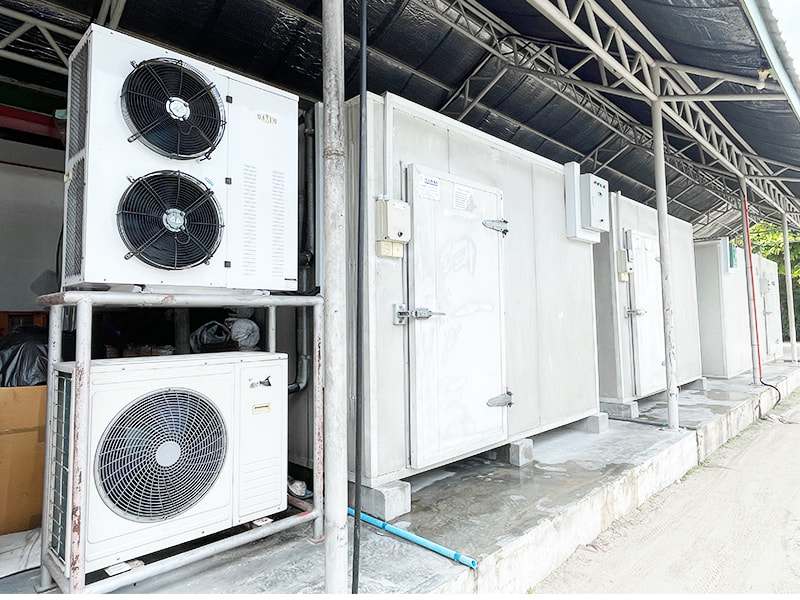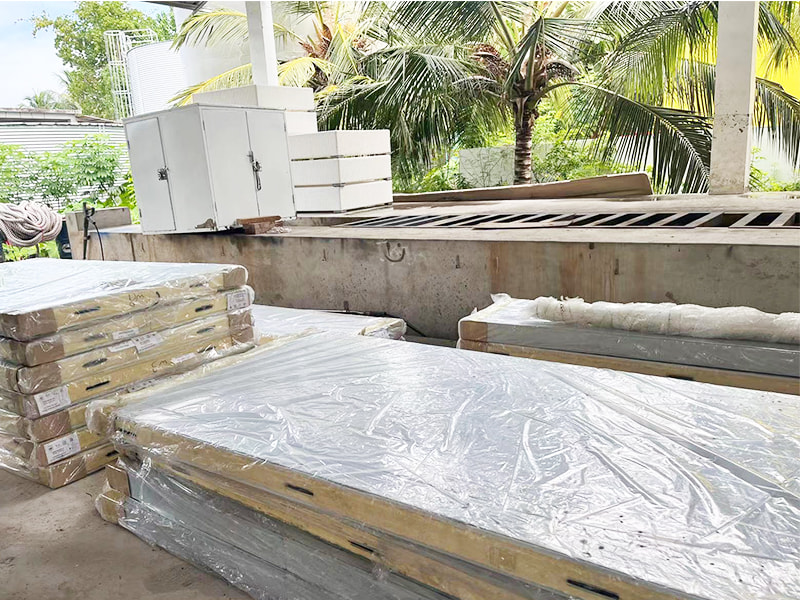When it comes to choosing the perfect location for your cold storage, it's all about finding the sweet spot. You want a location that is not only convenient for transportation and close to the market, but also in an area where the supply of goods is intense. After all, you want your cold storage to be easily accessible to suppliers and customers alike.
But that's not all. The location of your cold storage should also take into consideration the environmental factors that can affect the quality of your stored goods. It's best to build your cold storage in a shady area, away from direct sunlight and hot winds. This will help maintain a consistent temperature and prevent any unwanted spoilage.
Another important factor to consider is drainage. You want to ensure that your cold storage has good drainage conditions around it, with the groundwater level below the interlayer. This will help prevent any water damage and maintain a dry environment, which is crucial for cold storage.
And let's not forget about the electrical capacity. Before construction, make sure your cold storage is equipped with the appropriate three-phase electrical capacity to support the power needs of your machinery. This will ensure smooth operations and prevent any power-related issues.
Lastly, if your cold storage uses the water collection method, it's important to lay down water pipes and install a cooling tower. This will help manage the water flow and maintain the desired temperature inside your cold storage.When it comes to selecting the perfect location for your cold storage, remember to consider factors such as convenience, environmental conditions, drainage, electrical capacity, and water management. By choosing the right location, you'll be setting your cold storage up for success and ensuring the quality and longevity of your stored goods.
Alrighty then, let's talk about confirming the capacity and temperature for your cold storage. You don't want to be left with a room that's too small to fit all your goodies or one that turns your precious products into frozen popsicles. So, let's get down to business and make sure you've got it all figured out.
First things first, when it comes to capacity, you need to consider the highest amount of storage you'll need throughout the year. Think about the volume of storage items, the space between the ceiling and the stack, and the packaging space. You don't want to be stuck with a room that's bursting at the seams or one that feels as empty as your bank account after a shopping spree. So, calculate wisely and make sure you've got enough room to store all your goodies.
Now, let's talk temperature. The cold storage temperature should be designed according to the actual storage products and relative storage humidity. You don't want your fruits turning into icicles or your meat getting all warm and fuzzy. Each product has its own temperature needs, so make sure you do your research and set the thermostat accordingly. Keep those fruits and veggies cool and crisp, and your meat and fish frozen and fresh.
And hey, don't forget about humidity. It's like the icing on the cake, or in this case, the moisture in the air. You want to maintain the right level of humidity to keep your products in tip-top shape. Too much humidity and you'll end up with a soggy mess, too little and your products will dry out faster than a desert. Find that sweet spot and your products will thank you.
So, my friend, when it comes to confirming the capacity and temperature for your cold storage, remember to calculate wisely, set the right temperature, and keep an eye on that humidity. With these tips in mind, you'll be well on your way to storing your goodies like a pro. Stay cool, stay fresh, and keep those products chilled to perfection.

Alright, folks, let's talk about one of the most crucial aspects of cold room storage - the selection of insulation material. Now, I know what you're thinking, "Insulation material? That sounds boring!" But trust me, it's anything but boring. In fact, choosing the right insulation material can make or break your cold storage game.
So, what should you consider when selecting insulation material? Well, first and foremost, it needs to have excellent thermal insulation performance. You want something that can keep the cold air in and the hot air out. But that's not all, my friends. It also needs to be economical and practical. After all, no one wants to break the bank just to keep their goods cold.
Now, let's talk about the different types of insulation materials available. We've got panels, my friends. Panels that come in different shapes, sizes, and thicknesses. For high and medium-temperature cold storage, an 8 cm thick panel will do the trick. But for low-temperature and freezer cold storage, you'll want to go for a thicker panel, around 12 cm or 15 cm. And if you're dealing with a blast freezer, well, my friend, you'll need a panel that's a whopping 15 to 20 cm thick.
Now, let's get down to the nitty-gritty. We've got two main types of insulation materials - PU and XPS. PU is the fancy one, my friends. It's not only heat-insulating but also not obscene. However, it does come with a hefty price tag. On the other hand, we've got XPS. It may not be as thermal insulating as PU, but it gets the job done at a lower cost. So, it's all about finding the right balance between performance and budget.
And there you have it, my friends. The lowdown on selecting the perfect insulation material for your cold room storage. Remember, it's not just about keeping things cold, it's about doing it in style. So, choose wisely and keep those goods frosty!

Alright folks, now let's talk about the heart and soul of your cold room storage: the refrigeration system. This bad boy is what keeps your perishable goods fresh and frosty, so you better choose wisely.
When it comes to selecting the right refrigeration system, there are a few key factors to consider. First off, size matters. You need to make sure that the system you choose is appropriate for the size of your cold room. You don't want to end up with a system that's too small and can't keep up with the cooling demands, or one that's too big and wastes energy.
Next up, let's talk compressors. These babies are the workhorses of the refrigeration system. For small cold rooms, a hermetic compressor is usually the way to go. They're compact, affordable, and get the job done. Medium-sized cold rooms often opt for semi-hermetic compressors, while the big boys go for the heavy-duty semi-hermetic ones.
Now, let's not forget about the evaporators. These are the unsung heroes that work their magic to keep things cool. For high-temperature cold rooms, fan-type evaporators are the go-to choice. They may be a bit thirsty, but they get the job done quickly. For medium and low-temperature cold storage, seamless steel tube evaporation tubes are the way to go. They provide excellent insulation and ensure that your goods stay frosty.
So there you have it, folks. When it comes to selecting the perfect refrigeration system for your cold room storage, size, compressors, and evaporators are the key players. Choose wisely and keep those goods fresh and frosty. Happy cooling!
Keywords: Cold Room
Originally published 10 Nov 2023, updated 10 Nov 2023.
Get a Project Quote
Our representative will contact you soon